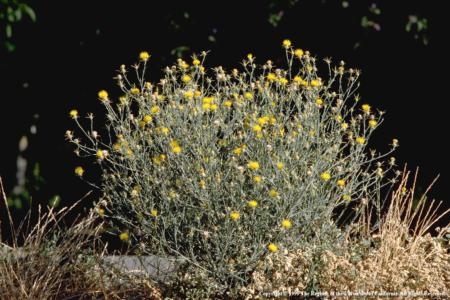Posts Tagged: feed
Collaboration may be an effective way to fund wildland weed control
Many funding sources for weed eradication have been reduced or completely eliminated. According to the California Assembly Budget Committee’s annual Preliminary Review of the Governor’s Proposed 2012-13 State Budget, the California Department of Food and Agriculture will absorb a permanent budget reduction of $12 million in program cuts, in addition to a $19 million budget reduction in 2011-12. Funding for weed management areas (WMAs) has been reduced to the point that many WMAs have become inactive or are being managed voluntarily as an adjunct to other duties.
At the California Invasive Plant Council (Cal-IPC: http://www.cal-ipc.org/) annual symposium at Lake Tahoe in October, it was stressed that competition for limited funding will pit us against ourselves and each other. Only by working together, creating collaborative projects, will we be able to benefit from the limited funding opportunities available.
Enter the collaborative grant-funded project. Agencies are looking for applications that demonstrate community support from a diverse range of stakeholders. For example, the Sierra Nevada Conservancy (SNC) is currently reviewing proposals received in response to their Healthy Forests initiative. Proposition 84 — The Safe Drinking Water, Water Quality and Supply, Flood Control, River and Coastal Protection Bond Act of 2006 — will fund approved projects. Five million dollars is available this year for healthy forest projects; next year an equal amount will be available for rangeland projects.
Two weed control projects created by UC Cooperative Extension Central Sierra received SNC invitations to submit complete grant applications. One project is a collaboration between UCCE, the U.S. Forest Service, and Yosemite National Park; another works in partnership with Cal-IPC.
As an example of the collaborative partnerships being sought by funding agencies, the National Fish and Wildlife Foundation is offering the ‘Pulling Together Initiative’ which “seeks proposals that will help control invasive plant species, mostly through the work of public/private partnerships such as Cooperative Weed Management Areas.” Successful projects must “have a project Steering Committee composed of local cooperators who are committed to working together to manage invasive and noxious plants across their jurisdictional boundaries.”
Clearly, in light of decreased federal and state funding, a strategic direction for weed-control projects will be to leverage resources, working together to do what no one agency can accomplish alone.
Two additional collaborative projects, created by Wendy West of UCCE Central Sierra, are highlighted here:
- A Weed-Free Forage List providing California resources for weed-free feed and erosion control materials will soon be posted on Cal-IPC’s website. The site will also contain explanatory information about weed-free certification, along with links to inspection procedures and noxious weed lists.
- Workshops designed to help prevent the spread of weeds during construction, aggregate production and maintenance activities are being offered throughout the state. The workshop is hosted and sponsored by U.S. Forest Service, National Park Service, California Department of Food and Agriculture, University of California and University of Nevada Cooperative Extension, and the California Invasive Plant Council.
A Fresno County workshop was held in January and a sold-out workshop is scheduled for March in Los Angeles County. If you are located in the central California region that includes Amador, Calaveras, El Dorado, Madera, Mariposa, San Joaquin, Stanislaus or Tuolumne counties, please consider attending the next workshop, scheduled for April 9 in Sonora. The final workshop will be held in Truckee on May 2. Register for the workshops here.
Prevention Workshop 2012 flier
Workshop Schedule.Agenda
New food alliance to 'tell the real story' of food production
A consortium of 52 food-related organizations yesterday announced the formation of the "Alliance to Feed the Future," according to a news release posted on the alliance's new website.
Two of the organizations involved are connected with UC Davis - the California Institute for Food and Agricultural Research and the Robert Mondavi Institute for Wine and Food Science.
The news release said misperceptions about modern food production and technology have become increasingly common. The alliance was formed to better articulate how food is produced.
"In an effort to meet the world’s increasing food needs responsibly, efficiently and affordably, the members of the Alliance to Feed the Future share the common goal of building understanding and promoting the benefits of modern food production, processing and technology," the article said.
Valley ozone story takes off
Research by UC Davis scientists that revealed a substantial amount of San Joaquin Valley ozone is generated by animal feed is getting wide coverage in the news media. Google News reported 126 articles on the subject.
Many newspapers ran the Associated Press version of the story, written by Fresno-based Tracie Cone. She reported that the study — funded by the U.S. Department of Agriculture, California Air Resources Board and the San Joaquin Valley Air Pollution Control District — was initially intended to measure the impact of animal manure, urine and flatulence on ozone levels.
However, the researchers discovered that millions of tons of fermenting cattle feed bears greater responsibility.
Mark Grossi of the Fresno Bee noted in his story that the study was published last month in the journal Environmental Science & Technology. This week's flurry of interest was generated by an April 21 news feed from the American Chemical Society press office. ACS publishes the journal.
In his story, Grossi wrote that the cattle feed explains only half of the Valley's ozone problem. The other half, Nitrogen oxide, or NOx, comes from vehicles. San Joaquin Valley Air Pollution Control District believes NOx is more important to control, the Bee article said.Meanwhile, Capital Press reported yesterday that the U.S. Environmental Protection Agency has rescinded its long-standing exemptions for agriculture under emission-control rules.
"Air quality in the San Joaquin Valley is consistently among the worst in the nation," said Deborah Jordan, director of the Air Division for the EPA's Pacific Southwest region, in a statement. "New and modified facilities will now be subject to the most stringent requirements, which will contribute to the health of our communities."

A dairy cow eats its rations.


